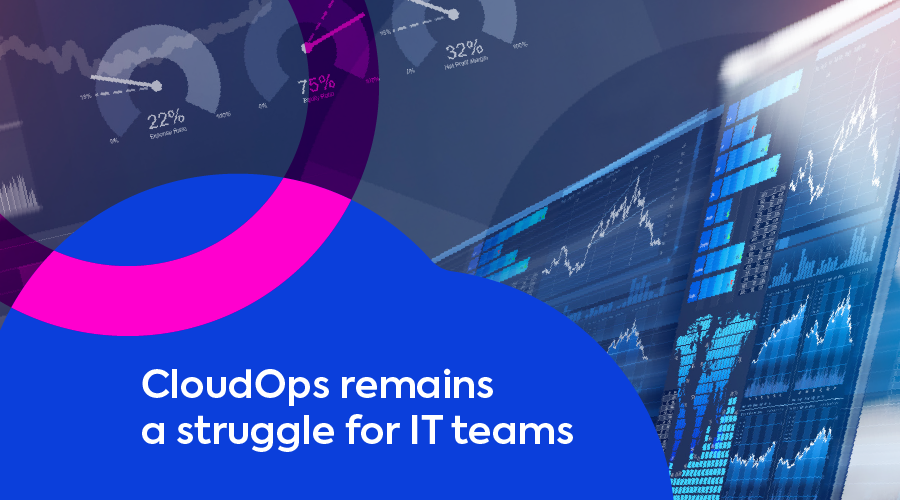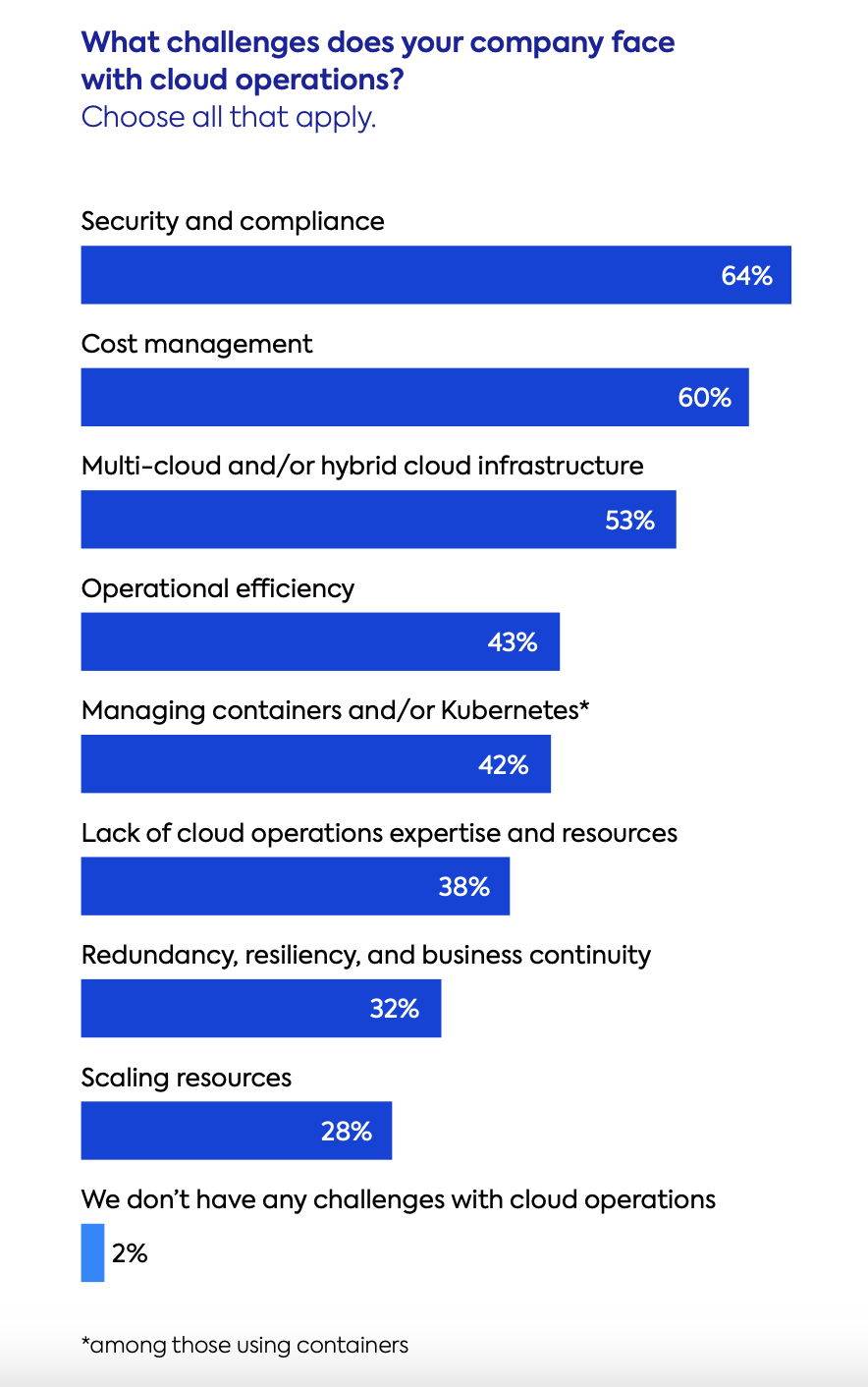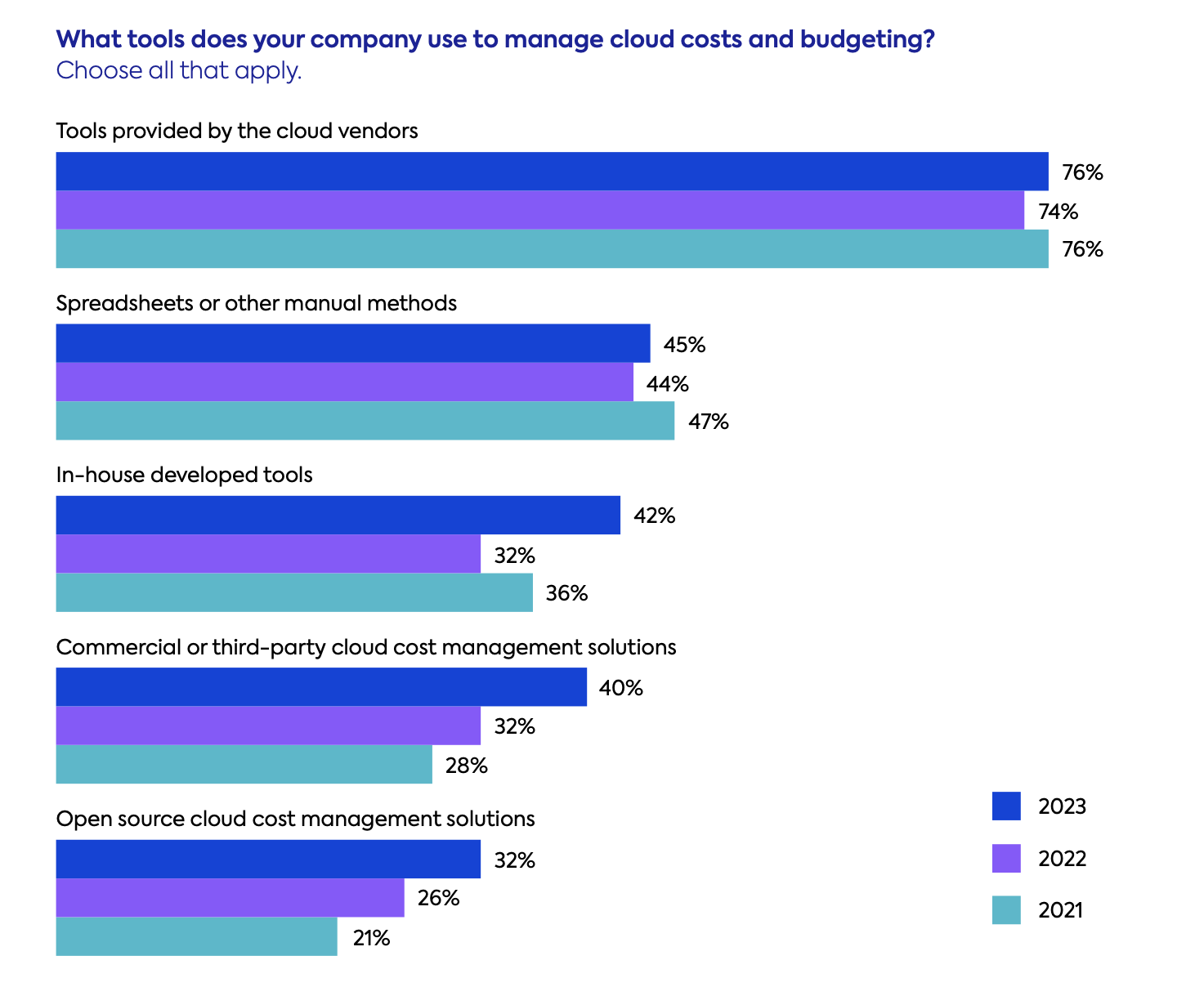
What is the current reality for teams embracing CloudOps? Has the cloud fulfilled its promise of organizational transformation? Or has it produced more chaos, out-of-control expenses, and unforeseen challenges?
Spot partnered with Dimensional Research to answer these questions and learn about the challenges that enterprises face in the cloud. From those survey results we developed the 2023 State of CloudOps report, which examines how large enterprise teams are operating in the cloud. Participants answers questions about their operational activities, staffing and expertise, automation technologies, and FinOps practices. The report also compared data from similar studies conducted in 2022 and 2021 for trend analysis.
The 2023 State of CloudOps report revealed three key trends in enterprise cloud operations:
- Cloud operations remains a struggle for IT teams
- Automation is the key to CloudOps success
- Enterprise teams are embracing FinOps but still dealing with barriers
This post will focus on the first finding, analyzing fresh challenges and key trends in CloudOps for 2023.
Security and cost top the list of cloud operations challenges
Cloud usage can be transformative for enterprises, but success requires the right operating model, tools, and personnel skillset. Without the optimal pieces in place, organizations face obstacles in implementing and maintaining their cloud operations.
The survey revealed that the top cloud operations challenges included security and compliance for 64% of respondents and cost management for 60%. Other high-ranking challenges included managing multi-cloud or hybrid cloud infrastructure (53%), achieving operational efficiency (43%), and lacking cloud operations expertise and resources (38%).
But these organizations are committed to improving. Since 2021, survey results have been consistent in naming desired public cloud improvements. In 2022, security was by far the top area of improvement (74%), process automation was second (67%), and cost management was third (60%).
For 2023, those top priorities have shifted slightly, with cost management rising to share the number one spot with security for 66% of respondents. Process automation ranked third as an area of improvement for 60% of respondents.
Just one-third of IT teams are “very confident” in their company’s ability to operate public cloud environments
By knowing the challenges that lie ahead for enterprises in the cloud, we can also gauge stakeholder confidence levels in their cloud operations. Although public clouds are hardly new to IT teams, just 33% state that they are “very confident” in their company’s ability to operate public cloud environments effectively.
Cost management and visibility concerns also rate high among CloudOps challenges. Just 25% of respondents said that they were “very confident” in their visibility into cloud costs. While this is a 5% increase of those who said the same in 2021, it shows that many companies have room to improve their processes around cloud cost management.
Large enterprises are turning to “build or buy” tools for managing cloud costs
It would be natural to think that companies are investing in technology solutions that help to improve visibility. While there are clear gaps in technology adoption to manage cloud costs, there have been some improvements since 2021.
The number of enterprises using third-party tools or homegrown solutions to manage cloud costs has risen steadily over the past couple of years. For 2023, 42% of companies are using “build” solutions that are developed in-house, and 40% have purchased “buy” solutions from commercial vendors. An additional 32% of companies are using open-source solutions to manage costs.
However, most companies (76%) are only looking at cloud costs with native cloud tools, a figure that hasn’t fluctuated much since 2021. Managing costs with spreadsheets and manual methods follows in second place, with 45% of enterprises relying on these tactics. The latter is consistent with figures from 2021 and 2022. Given the lack of scalability and error-prone nature of tracking using manual methods, it is worrisome that this number is not decreasing.
Essential tech and trends for CloudOps professionals
The 2023 State of CloudOps report is based on an online survey of 310 IT decision makers in the United States responsible for public cloud infrastructure investments. All participants work for companies that have invested significantly in public infrastructure clouds (IaaS) and have more than 500 employees.
The full report details how CloudOps fits into the roles and responsibilities for these professionals and how they are implementing initiatives around automation and FinOps. Get an interactive overview of the report’s findings.



